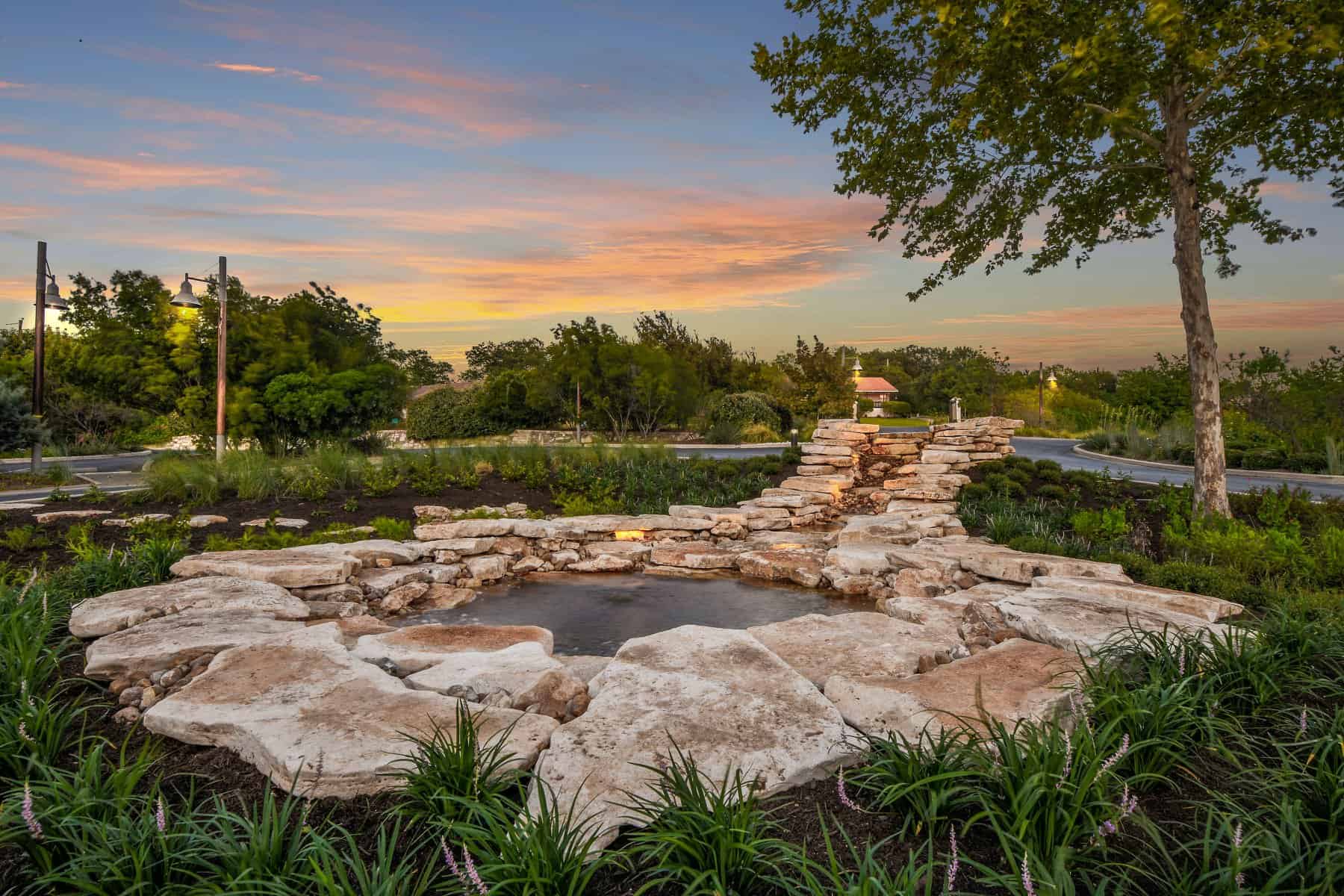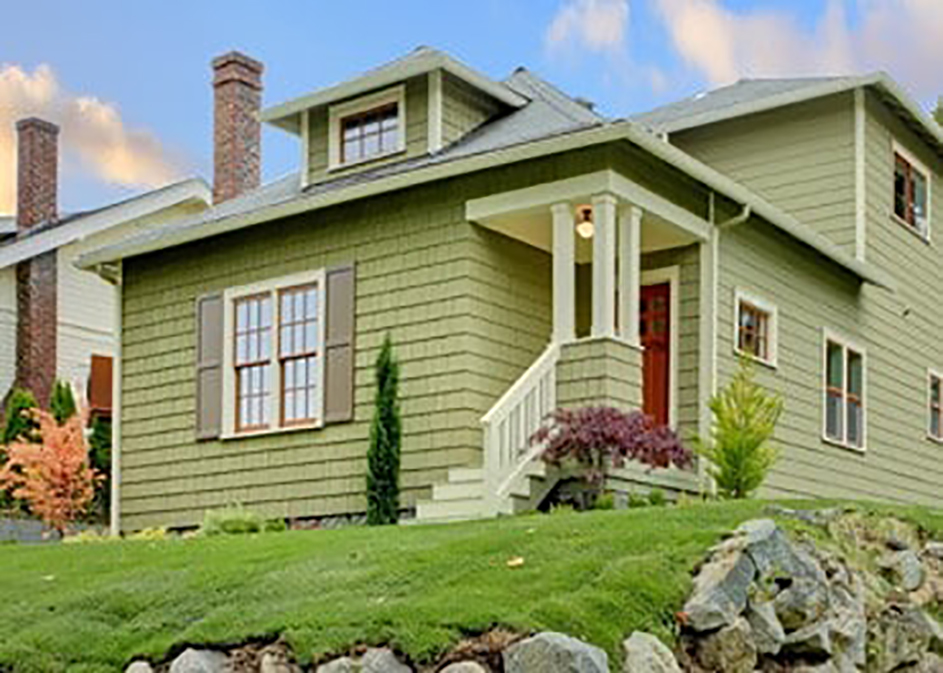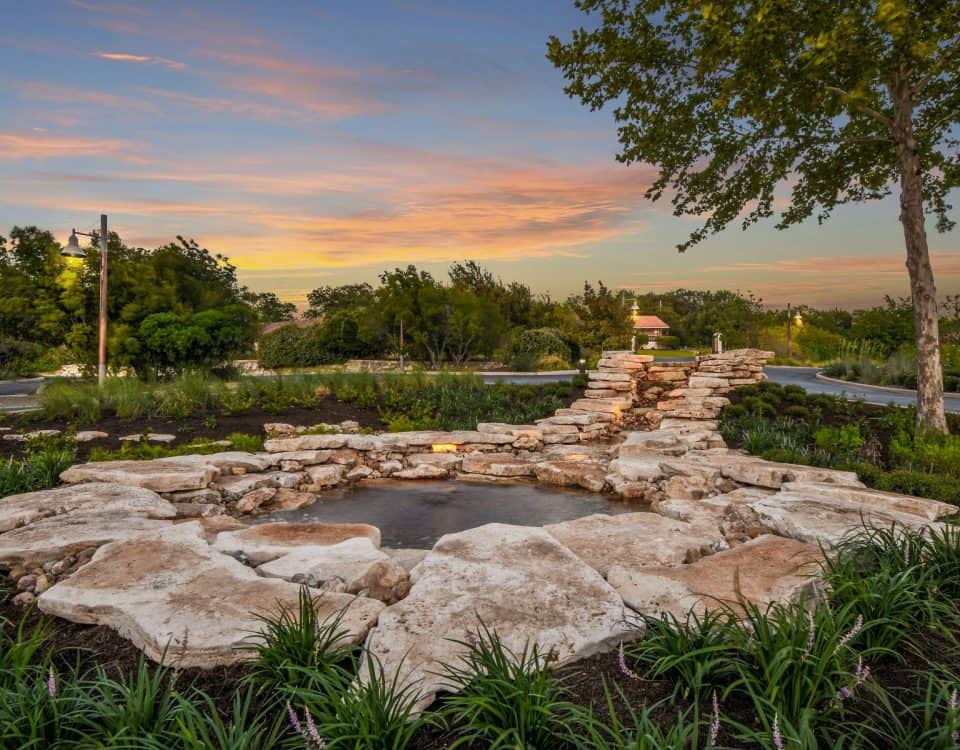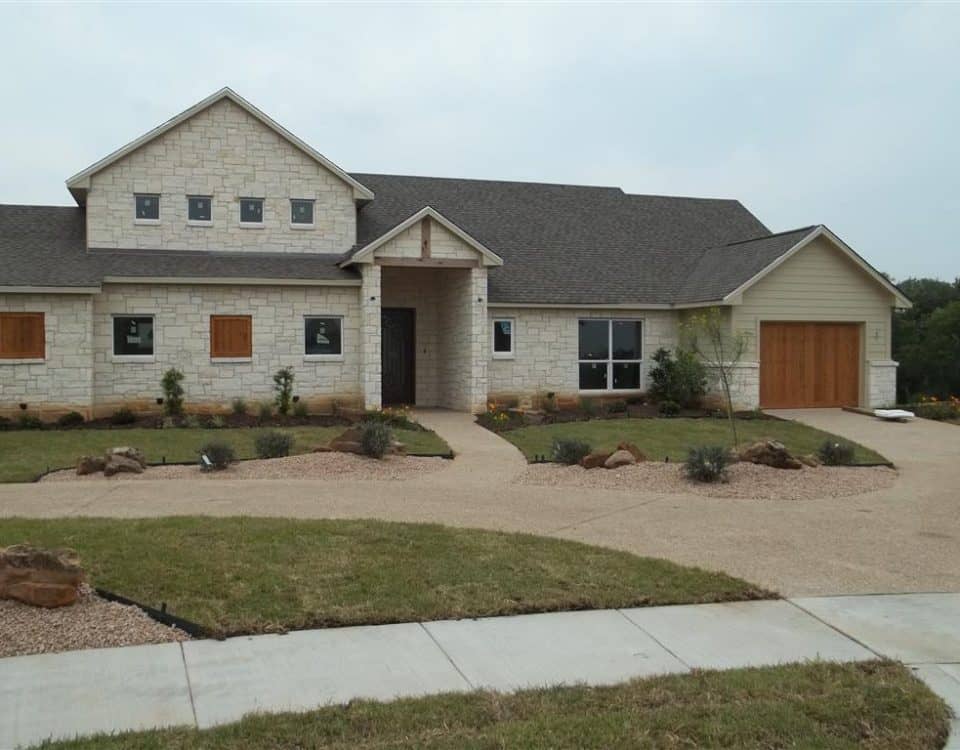
Trending Styles for Outdoor Lighting
March 27, 2023A second revolution is brewing in the heart of Texas. It’s not one of independence but of lawn and landscaping. Homeowners in Waco and across Central Texas are turning to eco-friendly gardening practices. At the center of this trend is a focus on landscaping with native Texas plants.
This surge of interest is a testament to the growing importance of environmental sustainability and the desire to be a positive effect on the Central Texas ecosystem. But, also, a growing desire for easier lawn maintenance and reduced water bills.
Sound interesting?
Landscaping with native Texas plants offers a lot more in benefit than the natural beauty and aesthetic of Central Texas. These plants are adapted to the local climate and soil conditions, making them more resilient to the challenges posed by the Texas heat and drought. Choosing plants with native roots in Texas is a great way to simplify maintenance costs and reduce the use of water and chemical fertilizer needed to create amazing outdoor spaces for your home.
Understanding the Texas Climate and Ecoregions
Texas boasts a remarkably diverse climate, ranging from the arid deserts of the West to the humid subtropical regions of the East. This diversity is mirrored in the state’s varied ecoregions, hosting a unique blend of flora and fauna across our state.
Waco and all of Central Texas, sits right at the cross-section of these diverse landscapes, featuring a mix of prairie, forest, and scrub. We have a dynamic climate, characterized by hot summers, mild winters, and intermittent droughts. All shaping the landscape and native plants that thrive in our part of Texas.
Understanding the Central Texas climate and how to choose plants that will be successful in the unique environment is critical for successful landscaping project design and maintenance. Native Texas plants are inherently designed to flourish in the local climate and soil conditions. That can help Waco homeowners and landscapers eliminate the guesswork in designing landscape vistas and minimize planting failures.
By selecting species that are adapted to Central Texas’s weather patterns and ecological characteristics, Picture Perfect Lawn & Landscape ensures our clients’ landscapes not only survive but thrive. Embracing native Texas flora supports the ecological balance while reducing maintenance headaches, making it a win-win for you, us, and the environment.
Incorporating native Texas plants into your landscaping is a meaningful investment in the beauty and ecological health of your property. As we dive in deeper, you’ll see how native plant landscaping offers an amazing mix of sustainability, resiliency, and jaw-dropping aesthetics for you and all Central Texas homeowners.
The Advantages of Native Texas Plants in Landscaping
Landscaping with native Texas plants offers a plethora of benefits that resonate deeply with homeowners. Embracing native Texas flora for your home not only elevates the aesthetic appeal of outdoor spaces, it supports sustainable landscaping practices. Below are the key advantages.
Water Conservation and Drought Resistance
Native Texas plants are naturally acclimatized to the region’s climate. Compared to non-native species, Texas plants require significantly less water. This natural adaptation means they can continue to thrive through sustained heat and drought conditions, making them ideal for hot Central Texas summers. Utilizing drought-resistant plants Texas Purple Sage, Sweet Acacia, and native flowers in your beds can drastically reduce water consumption while creating an amazing tableau of color.
There’s no need to forfeit beauty and color to align your lawn and garden with eco-friendly landscaping (xeriscaping) principles.
Natural Resilience to Local Pests and Diseases
Adapted over time to fend off native pests and diseases, plants with local history demand fewer chemical interventions to defend themselves against common issues. This not only saves on pest control costs but also contributes to a more natural garden environment that is safer for kids and pets.
Contribution to Local Ecology and Wildlife Support
Native Texas plants fill a critical role in the local ecosystem. They provide essential habitat and food sources for native Texas birds, bees, and butterflies. These symbiotic flora and fauna relationships can help your home’s landscape thrive and reduce harmful pests.
Incorporating Texas plants like Black-Eyed Susan and Texas Mountain Ash into your landscape design supports biodiversity and helps maintain the ecological balance.
Cost-Effectiveness and Reduced Maintenance Needs
Opting for native Texas plant landscaping can lead to significant savings. These plants generally require less fertilizer, fewer pesticides, and minimal care compared to their more exotic counterparts.
Of course, this reduces the cost and effort of maintaining a beautiful landscape. But, it also has a secondary effect, creating a synchronicity with the natural landscape around your property.
Similar to the Prairie Style home designs of Frank Lloyd Wright, xeriscaping (native plant landscaping) practices include his idea of “organic architecture” to create a beautiful outdoor space with complementary hardscaping that feels in-tune with the surrounding natural landscape and doesn’t stick out like a sore thumb.
Iconic Native Texas Plants for Central Texas Landscapes
Creating a flourishing lawn and garden in Central Texas that remains vibrant and colorful in the dry and heat is achievable with the right selection of native Texas plants. Here are some key species that are beautiful and well-suited to Central Texas climate and soil conditions.
Texas Purple Sage (Leucophyllum Frutescens)
A hallmark of the Texas landscape, this plant is revered for its striking purple blooms that appear after rain. Thriving in full sun and well-drained soil, it requires minimal watering once established, embodying the essence of drought-resistant landscaping.
Black-Eyed Susan (Rudbeckia Hirta)
With its bright yellow petals and dark brown centers, the Black-Eyed Susan is a cheerful addition to any Central Texas flower bed. It’s a hardy full sun plant that attracts pollinators, enhancing the ecological value of your home.
Sweet Acacia (Acacia Farnesiana)
This small tree/large shrub features fragrant yellow flowers and is a fantastic choice for adding scent, texture, and height to your landscape. It flourishes in full sun, tolerates various soil types, and once established, is incredibly drought-tolerant.
Texas Mountain Ash (Sorbus Texana)
Ideal for attracting local birds, Texas Mountain Ash offers stunning white flowers in Spring followed by bright red berries to add a pop of color above the eyeline. This tree prefers well-drained soils and can tolerate both full sun and partial shade, making it versatile for different lawn and home garden designs.
Creating a landscape design featuring these Texas natives creates harmony between your home, beneficial Central Texas fauna, and our climate. Picture Perfect Lawn & Landscape is ready to start designing a low-maintenance, resilient, and aesthetically pleasing landscape design with native Texas plants for your home.
Texas Native Plant Landscaping Design Principles
Creating a beautiful and sustainable landscape in Central Texas is a bit more complicated than choosing a few native plants. It requires a thoughtful approach to design. There is a certain knowledge base and key principles a landscaper designer needs to be well-versed in to ensure outdoor spaces are aesthetically pleasing, environmentally friendly, and low maintenance.
It’s here xeriscaping comes into its own.
Incorporating Xeriscaping Principles for Water Efficiency
Xeriscaping is a landscaping philosophy that minimizes the need for irrigation and other artificial interventions like fertilizers and pesticides. It’s especially pertinent to parts of the country like Texas, where sustained high temperatures, low precipitation, soil composition, and direct sun can flash fry many traditional landscaping plants.
Even drought-resistant native Texas plants aren’t immune to our summers. Xeriscaping success is about putting the right plants and other landscaping elements in the right arrangement for your yard, and then having a maintenance care plan that’s hand-developed to make your landscape a success.
Incorporating mulch, loam-building compost, proper shading, and efficient irrigation systems like drip lines, further enhances your lawn and landscape and puts it in a position to not just survive hot Waco summers, but thrive in spite of them.
Implementing Native Texas Plants in Your Landscaping
Native Texas plant success in your landscaping hinges on the specific needs of each plant variety. Full sun plants in Texas thrive under the broiling sun, while shade-loving species flourish in warm but shadowy corners. But the sun isn’t your only concern.
By assessing the light, soil type, and moisture level of each area in your landscape, Picture Perfect Lawn & Landscape ensures each plant is positioned in an environment to succeed. This strategic placement promotes plant health without the constant supplementary watering and fertilizing.
Creating Habitats for Local Wildlife
A yard full of native Texas flowers and plants becomes a haven for Central Texas species of birds, bees, and butterflies. These pollinators play a crucial role in maintaining ecosystem health. Incorporating a variety of plants that flourish at different times helps keep your yard looking great all year and ensures a continuous food supply for these creatures.
Additional garden features like bird baths and bee hotels can also enhance the attractiveness of your garden to wildlife, creating a lively and dynamic outdoor space. These helpful neighbors will also help guard your home against common insects and other pests.
Sustainable Landscaping in Central Texas
In Waco, and beyond, the idea of sustainable landscaping is gaining momentum. As water scarcity and the summer heat continues to increase annually, xeriscaping is becoming more and more attractive as a part of Central Texas residential landscape design.
We have increasingly many homeowners asking for native Texas plants to be featured in their home landscaping design. And we’re happy to collaborate on Central Texas home landscape designs that do more with less without sacrificing the end product, the curb appeal of your home.
Create beautiful outdoor spaces that are vibrant, conscientious, and low-maintenance by working with us, and help us in our mission to create a more aesthetic and ecological Waco, and McLennan County.
Native Plant Landscaping Success in and Around Waco
Numerous residential landscapes stand as successful examples of how native plants can transform a struggling outdoor space into a sustainable oasis. Now armed with an idea of what Central Texas native plants to look out for, take a look at the yards while you’re driving around.
It won’t take much gas before you find a homeowner who has replaced their water-gulping lawn with natural stone and native Texas plants surrounded by Texas Redbud trees. Keep an eye out for sunning Black-Eyed Susans and Purple Coneflowers. Central Texas homeowners switching to this can expect a flourishing yard with water reductions up to 70% compared to their old lawns.
You may have to peek over a few fences, but it’s easy to find Blue Mistflower and Mealy Blue Sage popping up in backyards and side lawn flower beds. Their tranquil colors and wonderful scent help turn private outdoor spaces into low-maintenance serene spaces.
These examples highlight what you can expect by embracing native plants in your home’s landscaping design.
Choosing the Right Designer for Your Native Plant Landscape
Selecting the right landscape designer is crucial when landscaping with native Texas plants. For homeowners in and around Waco, it’s essential to partner with a designer who has expertise in native plant species and understands the unique environmental conditions of Central Texas climate and soil.
Look for landscape professionals who demonstrate a deep knowledge of Texas native plants and xeriscaping principles. A good designer will consider soil type, sunlight, temperature, precipitation, seasonality, local wildlife, and more to ensure your home’s exterior is beautiful and sustainable.
They should also have bulletproof experience creating landscapes that are tailored to withstand the Texas heat and drought conditions, using plants like heat-tolerant flowers and drought-resistant shrubs. And don’t just view their portfolio, check their customer reviews too!
Click to See Our Customer Reviews
Moreover, the right designer values ecological practices, aiming to enhance biodiversity and reduce water usage through their designs. They can offer innovative solutions that align with your vision for a vibrant, resilient outdoor space that complements your home and lifestyle.
In Waco and the surrounding area, homeowners have a wealth of native plant options and design possibilities at their fingertips. Choosing a knowledgeable, experienced landscape designer is the best way to unlock the beauty of your home’s green space with sustainable, flourishing native plant landscapes that thrive year-round.
The Future of Landscaping in Central Texas: Going Native
As we look towards the future, the role of native Texas plants in landscaping projects is poised to expand exponentially. The movement is driven by an increasing awareness among homeowners of the ecological, economical, and aesthetic advantages that native plants provide.
From flowers and ornamental grasses to shrubs and trees, the growth of native plant landscaping is proving Central Texas landscapes can be both stunning and sustainable. Their ability to thrive in the local climate, requiring less water and fewer chemical treatments, aligns perfectly with growing homeowner desire to contribute positively to the local ecology while saving money.
We encourage homeowners to consider the lasting beauty and ecological benefits of native Texas plants for their next landscaping project. Whether you’re starting anew or thinking of revamping your garden, the choice to go native is a step towards a more sustainable, resilient, and vibrant landscape.
Join the Native Texas Plants Landscaping Revolution
If you’re feeling inspired to transform your outdoor space, we’re here to help. Picture Perfect Lawn & Landscape brings 20+ years of experience in designing, building, and caring for landscapes that celebrate the natural splendor of Central Texas.
From selecting the perfect native species to fit your space to implementing sustainable xeriscaping principles, we’re dedicated to creating outdoor spaces that are not only breathtaking but also resilient and low-maintenance.
Contact Us Today to learn how we can bring your vision to life with the best of Central Texas’s native plants.





